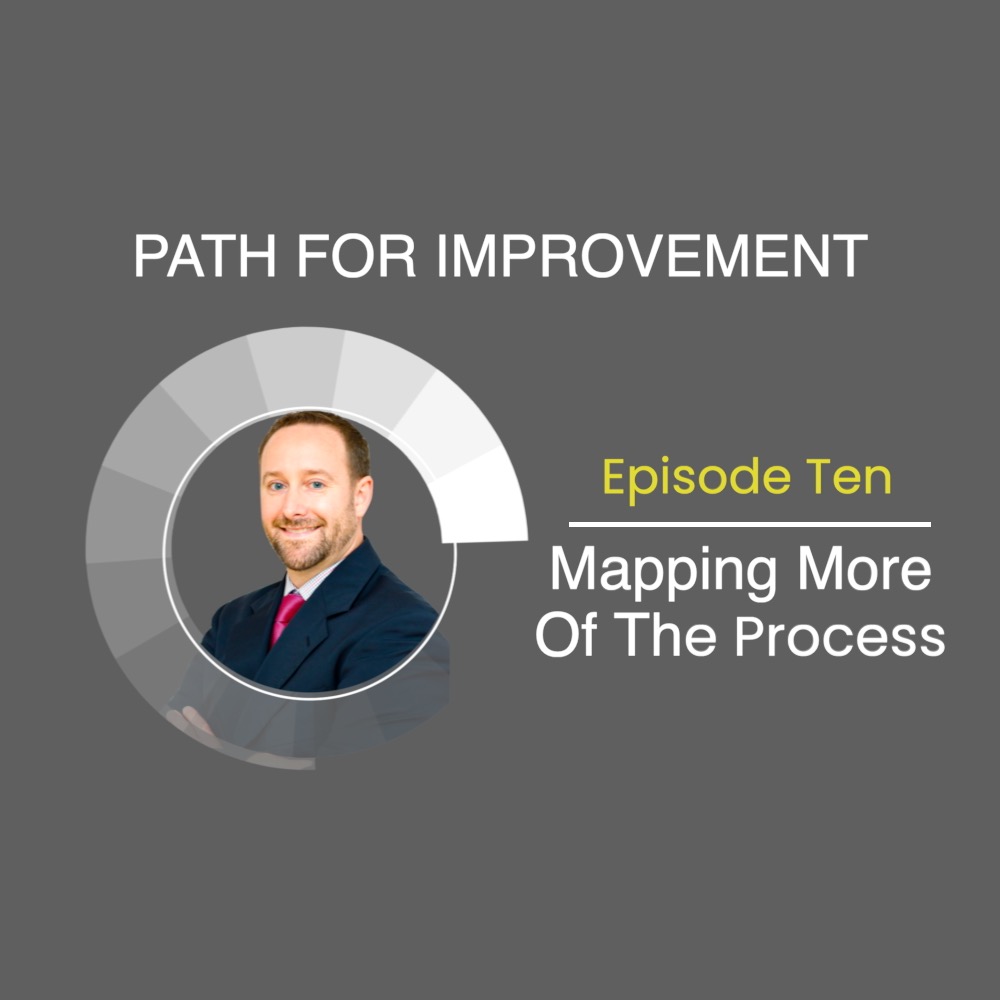Don't Be Limited by Quality Management: Misunderstanding Quality (Part 13)
Description
How does "quality" apply in all areas of an organization? In this final episode of the Misunderstanding Quality series, Bill Bellows and host Andrew Stotz discuss lessons from the first twelve episodes, and the big ah-ha moments that happen when we stop limiting our thinking.
TRANSCRIPT
0:00:02 .6 Andrew Stotz: My name is Andrew Stotz and I'll be your host as we dive deeper into the teachings of Dr. W. Edwards Deming. Today I'm continuing my discussion with Bill Bellows, who has spent 31 years helping people apply Dr. Deming's ideas to become aware of how their thinking is holding them back from their biggest opportunities. Today is episode 13 and the title is Quality Management: Don't be limited. Bill, take it away.
0:00:30 .5 Bill Bellows: Hey, Andrew. So this is episode. What number did you say it was?
0:00:36 .2 Andrew Stotz: 13. Lucky 13.
0:00:38 .1 Bill Bellows: Lucky 13. So then for those who are concerned about the use of the number 13, this is episode 14.
0:00:51 .0 Andrew Stotz: I thought you're gonna say episode 12A.
0:00:54 .7 Bill Bellows: And for those who don't mind the number 13, this is episode 13. And as we talked earlier, if Dr. Deming was to title the episode it would be... It would not be "don't." It would be "do not", do not be limited. So at the start I wanted to go back to review the path we're on. We've been on episode one back in end of May, Quality, Back to the Start. All part of the Misunderstanding Quality series for The Deming Institute. Episode two, we got into the Eight Dimensions of Quality with David Garvin. One of those dimensions was acceptability.
0:01:49 .8 Bill Bellows: Another was reliability. Another was I say dependability performance. Okay. And I think it's important in a series about misunderstanding quality to look at the work of David Garvin. Just realize I think it's fascinating to... You move out of the world of the American Society Quality and control charts and whatnot. And that's why I think Garvin's work paints a nice... Gives a nice perspective to not be limited. And then we got into in the third episode Acceptability and Desirability. Episode four, Pay Attention to Choices and the choice of differentiating acceptability which is I'll take anything which meets requirements, and desirability.
0:02:42 .3 Bill Bellows: I want that little doggy in the window. Not any doggy in the window. And then we followed that with episode five, the Red Bead Experiment which for many is their first exposure to Dr. Deming's work. I know when I worked for the Deming Institute for a few years the Red Bead Experiment website was one of one of the most popular pages. I believe another one was the 14 Points for Management. And, personally, I've presented the Red Bead Experiment think just once, just once. And I'm going to be doing it at the 2025 at, let me back up, the Bryce Canyon Deming... The Bryce Canyon...Bryce Canyon Forum. I can't remember the name. It's a partnership between Southern Utah University and The Deming Institute, and we're doing it at Southern Utah University. And on one of those days, I'll be doing the Red Bead Experiment, which takes a lot of time and then studying to present it a few years ago I was getting all the videos that I could find of it, many of them on The Deming Institute web page and none of them have the entire data collection.
0:04:18 .5 Bill Bellows: They kind of fast forward through six people putting the... drawing the beads each four times and when you're up on stage trying to do that, I had four people that's, you gotta do a lot of work to make it that exciting. But the reason I present it, I say I present it for a number of reasons. One is to do the classic "The red beads are not caused by the workers are taken separately. They're caused by the system which includes the workers. It's an understanding of variation and introduction to control charts" and all of that is as exposed by Dr. Deming is classic.
0:05:00 .7 Bill Bellows: But, I'd like to take it one step further, which is to go back into that desirability thinking and look at the concept that we've talked about of going through the doorway and going past the achievement of zero defects, zero red beads, and realize that there's further opportunities for improvement when you start to look at variation in the white beads. And, that then takes into account how the beads are used. And that gets us into the realm of looking at quality as a system. Looking at quality with a systems view as opposed... That's good, that's good, that's good. With or without an appreciation on how the bead is used. So anyway, that was episode five. We explored that. Next we got into the differentiation of Category Thinking and Continuum Thinking.
0:05:55 .5 Bill Bellows: And for those who haven't listened to it, maybe not in a while, the differentiation is category thinking. Putting things in categories such as red beads and white beads are the... It could be any categories, categories of fruit, categories of religion, categories of political systems. We have categories and then within a category we have variation. We have different. We have apples and oranges and then we have a given type of orange. And then there's variation in the juiciness, ripeness. That's called continuum thinking, which goes back to, if we go back to the red beads and the white beads is notion that the white beads are not uniformly white, not uniform in diameter or weight.
0:06:44 .5 Bill Bellows: And, what are the implications there? Well, if we think in terms of categories, red beads and white beads, if all the beads are white have we stopped improving? And Dr. Deming and I believe it was Point 5 of the 14 Points stressed the need for continual improvement. And yes, you can continuously improve and reduce cost, you can continuously reduce cycle time, but can you continuously improve quality? Well, not if you're stuck in a category of good, then the role of that is to just to remind people that there's opportunities to go further when you begin to look at variation in white, which is the essence of looking at how what you're looking at is part of a system, which Dr. Deming was well, well aware of.
0:07:33 .7 Bill Bellows: Next we got into the Paradigms of Variation and a big part there was differentiating acceptability. Well, going beyond acceptability was differentiating accuracy from precision. Precision is getting the same result shrinking the variation, otherwise known as getting achieving great piece-to-piece consistency. Metrics that begin with the letter C and sub P could be Cp, Cpk, are the two most popular. Those are measures of precision that we're getting small standard deviations that they are very, very close to each other. But in the paradigms of variation that was what I referred to as Paradigm B thinking we're looking for uniformity. Paradigm A thinking being acceptance, we'll take anything that meets requirements... Or academically called paradigm A. Paradigm C is what Dr. Taguchi was talking about with the desirability, where we're saying I want this value, I want uniformity around this specific value.
0:08:43 .9 Bill Bellows: Here what we're looking at is uniformity around the target, around an ideal, otherwise known as piece-to-target variability. And, the idea there is that the closer we are to that ideal, the easier it is for others downstream to integrate what we're passing forward. Whether that's putting something into a hole or does this person we want to hire best integrate into our system. So, integration is not just a mechanical thing. In episode eight we then got into Beyond Looking Good which then shatters the Paradigm A acceptability thinking, going more deeply into the opportunities for continual improvement of quality.
0:09:29 .1 Bill Bellows: If you shift to continuum thinking. Next, Worse than a thief coming from Dr. Taguchi. And that's the issue of achieving uniform. Part of what we looked at is the downside of looking at things in isolation and not looking at the greater system. Then episode 10 we look at Are you in favor of improvement of quality?
0:09:53 .6 Andrew Stotz: I'm in favor.
0:09:55 .7 Bill Bellows: To which he would always say, but of course. That was a reference back to chapter one of The New Economics. And he said everyone's got an answer. Improving quality computers and gadgets. And what we spoke about is Quality 4.0, which is gadgets of the 21st century, tools and techniques. And again, what we said is, there's nothing wrong with tools and techniques. Tools and techniques are about efficiency, doing things well, but they lack what Russ Ackoff would say in asking, are we doing the right things well. And then episode 11 delved into what I've...amongst the things I've learned from Dr. Taguchi, To improve quality, don't measure quality.
0:10:42 .5 Bill Bellows: If we have a problem with, we want to reduce scrap, we want to reduce rework, we want to eliminate the problems that the customer has experienced or that someone downstream is experiencing. And what Dr. Taguchi emphasized was start asking, what is the function of the thing we're trying to do? And the idea is that if you improve the function, then you're likely to improve the quality as measured by what the customer is looking for. If you focus on what the... If you focus your efforts on reducing what the customer is complaining about, you're likely to get something else the customer is complaining about. And for more on that, go to episode 11.
0:11:19 .0 Bill Bellows: And then episode 12, Do specification limits limit improvement? Which again goes back to what I experienced on a regular basis is in my university courses with people I interact with and consulting is a very heavy emphasis on meeting requirements and moving on. And not a lot of thought of going beyond that or even that there's anything more
























